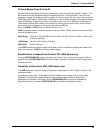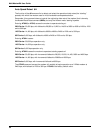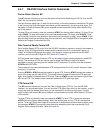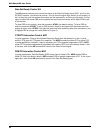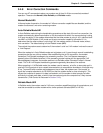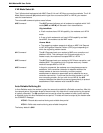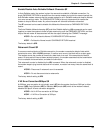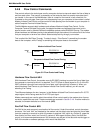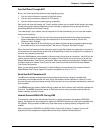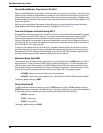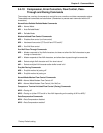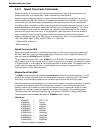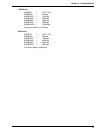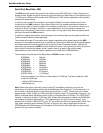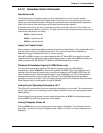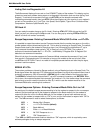
67
Chapter 5 - Command Mode
Xon/Xoff Pass-Through &E7
So far, you have had three choices to make regarding pacing:
1. You can set the modem to respond to Xon/Xoff pacing.
2. You can set the modem to respond to RTS pacing.
3. You can set the modem to ignore pacing completely.
Well, we’re not done with pacing yet. There’s another choice you can make (which actually can apply
to both pacing and modem-initiated flow control, although it applies mainly to pacing) and that is
something called Xon/Xoff Pass-Through.
This means that if your modem is set to respond to Xon/Xoff commands, you can have the modem
do one of the following:
1. The modem responds to the Xon and Xoff pacing commands while at the same time allowing
these commands to pass through the modem and on to the remote location. We call this
“Respond, Pass-Through”.
2. The modem responds to Xon/Xoff pacing, but does not allow the pacing signals to pass through
the modem and on to the remote location. We call this “Respond, No Pass-Through”.
When Xon and Xoff commands are allowed to pass through the modem, the computer or terminal at
the remote site will receive these commands, and depending on how it is configured, the computer or
terminal may respond to them also.
When two MultiModems are connected in Normal mode (not using error correction), Xon/Xoff can be
used to control the flow of data between the modems. Flow Control can be turned on or off with the
Normal Mode Modem Flow Control commands. When the modems are connected in Reliable mode,
a different method of modem Flow Control is used, and the commands for Normal Mode Modem
Flow Control are ignored.
When you are using Speed Conversion in Normal Mode, you must activate the modem’s Normal
Mode Modem Flow Control (Speed Conversion is explained in Section 5.4.11).
Send Xon/Xoff Characters #X
The #X phone interface command allows the modem to send either a single or multiple Xoff
characters at the modem's buffer full level. When the modem’s buffer reaches it's "buffer full" level,
the next character received causes another Xoff to be sent for every character subsequently received
by the modem.
The AT#X0 command (factory default setting) causes one Xoff to be sent until the buffer reaches the
Xon level. The AT#X1 command causes an Xoff to be sent for every character received after the
modem reaches its buffer full level.
Hewlett-Packard ENQ/ACK Pacing &E9
If the modem is being used with Hewlett Packard (or similar) equipment that employs ENQ/ACK
pacing, the modem can be configured to respond to ENQ/ACK commands, making it compatible with
HP systems. Doing so does not affect any other flow control or pacing already configured in the
modem.
When configured for ENQ/ACK, the ENQ (Control-E) and ACK (Control-F) signals from the HP
equipment will be accepted and responded to according to Hewlett-Packard protocol.



